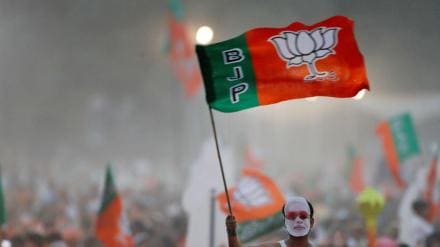By N Chandra Mohan
In the heat and dust of the ongoing national elections, an intriguing feature is the single-minded focus of the frontrunner, the BJP, in critiquing the Congress party’s manifesto rather than showcasing its Sankalp Patra with its 10-year track record in office and promise of Viksit Bharat by 2047. Top leaders, led by Prime Minister Narendra Modi — who is eyeing a third term — are busy stoking up fears on what the main opposition party would do if it came to power through its redistributive agenda; of the prospect of women losing their mangalsutra and ensuring Muslims had the first claim on the nation’s resources. In this din, there is hardly any commensurate attention on the BJP’s manifesto.
Over the last decade, the BJP has been continually raising its level of ambition on the economy’s progress — from setting a target of a $5-trillion economy in five years to $10 trillion in the eight years thereafter and now to a $30-trillion developed nation by 2047. The official think tank, Niti Aayog, has been tasked with preparing a detailed sector-specific road map for this vision. The thrust and parry of an election campaign would definitely have been enriched if questions were raised about whether the Sankalp Patra provided any clues on the sort of policy measures that are necessary to enable the currently $4.1-trillion economy to make this transition from a developing to an advanced nation.
With the Congress busy defending its election manifesto — with a senior leader even thanking the BJP for creatively rewriting it — the party has not been able to mount an attack on the Sankalp Patra. A debate would have indicated that while the BJP proposes to improve infrastructure, turn India into a global manufacturing hub and create “high-value” jobs, there is virtually no mention of big-bang economic reforms in land, labour, and agriculture, privatisation of state-owned assets, and further opening up to foreign direct investment (FDI). These measures, among others, are critical to power the India growth story so it becomes one of the top three nations globally and an advanced economy by 2047.
This missing reform agenda possibly stems from the fact that the ruling party did attempt these measures but failed. In its first term, it sought to amend the previous UPA regime’s Land Acquisition, Rehabilitation and Resettlement legislation through an ordinance but did not succeed due to a political backlash. In its second term, it sought to push through labour reforms but it developed cold feet after an initial show of enthusiasm. On agriculture, farmer unions after a year-long agitation forced the government to scrap three laws that provided farmers greater freedom to sell their produce and enter into contracts with aggregators to supply at predetermined prices.
Similarly, after announcing that the government has no business to be in business and featuring a sweeping agenda on privatisation in Budget 2022, the progress has been somewhat underwhelming with only Air India and Neelachal Ispat Nigam passing into private hands. While the ruling dispensation liberalised the regime for FDI in its first term, progress has slowed. Barriers to overseas investment exist in almost 40 industries and easing those, “barring a few ultra-sensitive sectors, would inject investor confidence”, according to Richard Rossow, chair of US-India Policy Studies at the Center for Strategic and International Studies, who was quoted in the Financial Times.
The fact that no big-bang reforms featured in Sankalp Patra is because they are politically problematical and might not help win elections. Despite a commanding mandate, the BJP’s experience with them — although it has had successes with the goods and services tax and Insolvency and Bankruptcy Code — resonates with what happened with earlier governments. Manmohan Singh, as finance minister in the Narasimha Rao-led government, was able to implement difficult reforms at a time of crisis in the early 1990s. When that blew over, Rao pulled the plug on reform in favour of his middle path strategy after the Congress faced setbacks in the Andhra Pradesh and Karnataka elections in 1994.
Why are reforms problematic? One line of thinking has been explored by this writer in a joint paper with Professor Ronald Herring entitled “Economic Crisis, Momentary Autonomy and Policy Reform” in The Post-Colonial States of South Asia. Partly this is because in a genuine democracy, state autonomy is always difficult to come by. Hesitant and modest efforts at reforms are invariably halted by societal resistance, especially from interest groups like organised labour, rich farmers, civil servants, and ministers. The Vajpayee-led NDA backtracked on privatisation despite initial successes precisely for such reasons.
To be sure, the absence of reforms in BJP’s manifesto does not preclude efforts to kick-start them again in the first 100 days and five years in office if it gets a third term. But the deafening silence so far on highlighting its aspirations for Viksit Bharat in 2047, while attacking the Congress party’s manifesto, does not behove a party that has thematically defined its earlier national electoral campaigns with the catchy promise of better times in 2014 and muscular nationalism in 2019.
N Chandra Mohan, The writer is an economics and business commentator based in New Delhi. Views are personal.
